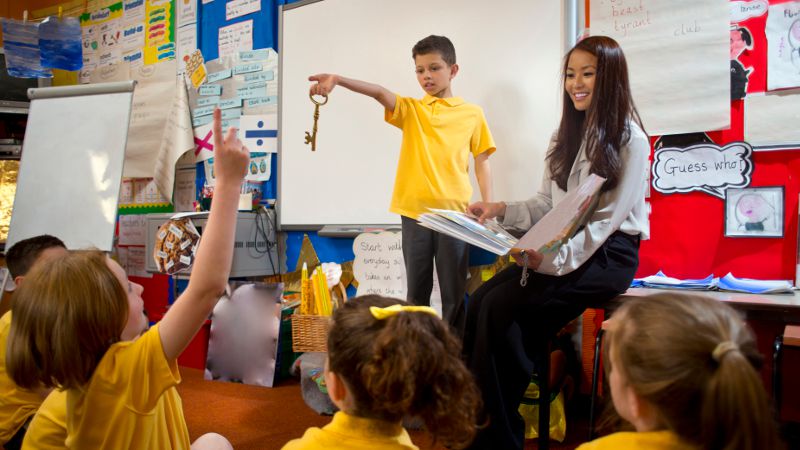
Chunking as a Teaching and Learning Strategy
A Guide for Classroom Teachers and Teacher Aides
Chunking – the teacher divides a program, task, topic, list or process into small chunks to make learning more manageable.

If there were a trifecta of education strategies, it would be scaffolding, modelling and chunking. These 3 strategies are the cornerstone of all effective teaching programs - they work hand-in-hand to help students develop their skills and knowledge.
Scaffolding and chunking are often confused as they are very similar and are commonly used together. Scaffolding involves gradually removing support and guidance until the learner can independently complete a given task. On the other hand, chunking is dividing a larger task into more manageable separate ‘chunks’. Dividing a challenging or overwhelming task into small components means each component can be given due attention. A good analogy is the bewildering prospect of painting an entire house. For most people, this would be too large a job to even bother attempting. However, by painting one room at a time, it feels much more achievable.

Chunking into ever smaller pieces makes challenging tasks more achievable and allows the student and the teacher to identify and target specific aspects that need additional support.
One advantage of chunking is that difficult tasks can be divided into ever smaller chunks to identify the specific component that is causing the problem. For example, a task can be divided into 10 chunks. 9 chunks are completed with relative ease. 1 chunk is causing difficulties and is therefore divided into 10 additional chunks. Of those 10 chunks, 8 are easy and are quickly completed. The final 2 chunks are divided into 3 more chunks each (6 in total) which are completed with the support of the teacher. Additional practice activities are provided to address the specific problem. Now imagine if this task was not chunked into small components. The student may lose confidence in their abilities believing that they ‘couldn’t do it’, when in fact it was only a tiny aspect of the overall task that they struggled with.
The student may lose confidence in their abilities believing that they ‘couldn’t do it’, when in fact it was only a tiny aspect of the overall task that they struggled with.
Chunking is similar to scaffolding in that it can be implemented with various time horizons. Programs of study (often called units of study), can be as short as a few weeks to as long as a school term. Units can be divided into weekly chunks followed by lesson-sized chunks. More often however, chunking is used as a day-to-day strategy to help students divide and conquer a small task that would otherwise seem impossible. For example, the teacher notices that a student is struggling and is becoming progressively agitated. The student might lack content knowledge, or they may not have the metacognitive skills to overcome issues of this nature – in other words, they do not have the mental tools to effectively approach the task. From the student’s perspective, the problem is too hard to even bother starting – they do not even know where to begin or what to do. In this case, having the student divide the task into several distinct chunks is likely to be effective. Then, each chunk could be resolved in turn, starting with the easiest. More difficult chunks can be further divided into smaller chunks. Students can be taught these types of skills and reminded that only a small part of the task is causing their issue – otherwise, they are doing well.
More often however, chunking is used as a day-to-day strategy to help students divide and conquer a small task that would otherwise seem impossible.
Hint: technically speaking, chunking refers to the way in which a larger number of items can be recalled if they are first grouped (into chunks). i For example, you may only be able to recall 10 random items from a list, but if you chunked 30 items into 3 chunks of 10, you may be able to recall all 30. Chunking is basically a memory trick. When applied to the education setting, chunking can be used as a memory aid for various tasks such as memorising a vocabulary list. For most teachers however, chunking describes the process of dividing tasks into ever smaller tasks.
Foot notes:
- For further reading, see the ‘magic number’ from Miller’s Law which says that people can comfortably remember 5-9 items such as faces, words, or objects (7 give or take 2 either way).





















